The exhibitions began with a cultural show featuring traditional dances, songs and music of Bangladesh’s adivasi and tea communities. In his welcoming address, Philip Gain, Director of SEHD and photographer discussed the stories behind the photos on exhibit, which depict the lives, struggles, work conditions and cultures of tea workers and Bangladesh’s ethnic communities.
During workshops organized by SEHD in 2012 and 2013, it was revealed that there were many unrecognized ethnic communities in Bangladesh, especially within the tea gardens. The project, “Mapping and capacity building of tea plantation workers and little known ethnic communities of Bangladesh” funded by European Union and ICCO cooperation adopted an “emic” approach to investigating these unexplored communities. Field researchers from the ethnic communities played a key role in gathering primary information about these communities by conducting focus group discussions (FGDs) and field level investigation in all tea gardens, 16 districts in Rangpur and Rajshahi divisions, and nine districts in the North-centre and Northeast. Photography was an integral part of mapping these communities who were on display at the exhibitions.
Most of the photos on display were taken during the three-year duration of the project and its research activities. While the government records show only 27 ethnic communities in Bangladesh, SEHD has found as many as 80 different ethnic communities in the tea gardens (70 of them not on the government records) and 37 ethnic communities in other areas that are not on the government records. According to Philip Gain, it is hoped that through SEHDs research, the information obtained will reach government agencies such as the Bangladesh Bureau of Statistics so that these ethnic groups are recognized and fairly represented in the national census.
A constitutional amendment (fifteenth) passed in 2011 declared that “The people of Bangladesh shall be known as Bangalees as a nation and the citizens of Bangladesh shall be known as Bangladeshies”. This amendment mentions Adivasis as “tribes, minor races, ethnic sects and communities” and fails to provide them with the recognition they require to help preserve their unique cultural heritage and languages.
Dr. Shahidul Alam, a photographer of international repute, talked about the invisibility and extinction of the languages of the ethnic communities and said, “We fought for our Bangla language in 1952, then why do we want to take away the languages of other communities?” He also talked about the power dynamics of photography and the importance of being mindful of where we stand when we take and use pictures of others. He praised the photographers of the exhibitions for taking images from the perspective of the ethnic communities.Chitta Ghosh, president of Dinajpur Press Club; Parimal Singh Baraik, Director of Moulvibazar Cha Janagoshthi Adivasi Front and Sandhya Malo, director of Women Commission for Development in Bangladesh also spoke about the invisibility and struggles of the ethnic communities.
Professor Md. Golam Rahman, chief information commissioner and the chief guest, talked about the diversity in our nation and encouraged the Bangalee majority to embrace a pluralistic society. He said, “Different religions, languages, communities—these are the reality of our state. It cannot be ignored. We have to remember that unity is possible to attain in diversity.”
In his concluding remarks, Moazzem Hossain, chief executive of Gram Bikash Kendra and chair at the launching thanked the guests of honour, the organizers, and the audience and reiterated the significance of diversity for our nation. “It’s a source of honour for our nation that so many different communities are found in such a small country. We should work to present our diversity to the rest of the world.”
Communities and their life, culture, environment, tradition, economy, etc. featured at the photography exhibitions: Almik, Bakti, Banai, Bangalee, Baraik, Barma, Basphor, Bauri, Bawn, Been, Bhar, Bhokta, Bhuimali, Bhuiya, Bhumij, Bihari, Bindumondol, Buna, Bunerjee, Chak, Chakma, Chasha, Chatri, Chowhan, Dalu, Dusad, Ganju Singh, Garo, Ghatual, Giri, Goala, Gorait, Goswami, Gour, Goyashur (also known as Ashur), Hajong, Hajra, Hari, Hodi, Jhora, Kadar, Kahar, Kairi, Kalindi, Kalwar, Kanu, Karmokar, Keot, Kharia, Khasi, Khodal, Khumi, Khyang, Koch, Koda, Kol, Kondo, Kora, Kshatriya (one-third of total), Kumar (Pal), Kurmi, Lohar, Lushai, Lyngam, Mahato, Mahle, Majhi, Mal, Malo, Mandraji, Marma, Modok, Monipuri, Mridha, Mru, Munda, Mushohor, Naidu, Nayek, Nepali, Noonia, Oraon, Paharia, Painka, Pandit, Pangkhua, Pashi, Patro, Phulmali, Pradhan, Rajgor, Rajballobh, Rajbhar, Rajbongshi, Rajwar, Rakhaine, Rautia, Reli, Robidas, Sadhu, Santal, Shabor, Sheel, Shobdokar, Suklaboiddyo, Tanchangya, Tanti, Teli (Pal), Tongla, Tripura, and Turi.
Rally to mark opening of national convention and photography exhibitions
On April 17 2016, a colourful procession of performers walked through the streets of Dhaka singing and dancing in festive celebration. As they made their way from Asad Avenue to Manik Mia Avenue, adorned with bold headbands proclaiming “Our Identity Our Culture”, their message was clear, “We are here. See us. Acknowledge us. Recognize our culture.” The rally marked the launch of the national convention on “Rethinking Identity, Geography and Rights of Tea Workers and Little-known Ethnic Communities” held on April 17 and 18 2016 at CBCB Centre and DRIK Gallery.
The national convention sought to create awareness regarding Bangladesh’s tea workers and the little-known ethnic communities and discuss issues central to their rights and preservation of their unique cultures. During the rally, the participants cheerfully danced and sang in their traditional dresses as they proudly showcased their culture to spectators. It featured saxophone performances by representatives of the Shobdokor community while Santals played drums and kartals to accompany the traditional Dashai (welcome) dances. Participant during the rally included Philip Gain, director of SEHD; Dr. Tanzimuddin Khan, Associate Professor, Department of International Relations, Dhaka University and Bichitra Tirki, noted adivasi leader and land rights activist amongst many others. The National Convention was concluded on April 18, 2016 with a vibrant cultural show that further highlighted the uniqueness and diversity of Bangladesh’s small and little known ethnic communities.
Book launch, premiere screening of documentary film and discussion
As part of the national convention on the theme, “Rethinking Identity, Geography and Rights of Tea Workers and Little-known Ethnic Communities” the Society for Environment and Human Development (SEHD), in partnership with Gram Bikash Kendra, launched photo album, “On the Margins: Images of Tea Workers and Ethnic Communities” organized a panel discussion on 18 April 2016 at CBCB Centre. In total 167 people (46 women and 121 men) participated in the national convention on 18 April.
Chaired by Professor Sakhawat Ali Khan, Chairman, SEHD, the launching and discussion was graced by Dr. Rafiqul Islam, professor emeritus, University of Liberal Arts (ULAB) as the chief guest. Dr. Hossain Zillur Rahman, executive chairman, Power and Participation Research Centre (PPRC); Dr. Tanzimuddin Khan, associate professor, Dhaka University; Moushumi Shabnam, anthropologist, North South University; and Hasna Hena Khan, Program Officer of the ICCO Cooperation commented on the book and reflected on the key findings of studies on identity of ethnic communities who remain little-known or invisible.
Philip Gain, director of SEHD, in his introduction, presented the summary of the findings of the mapping of little-known ethnic communities of the plains and the ethnic communities in the tea gardens. The government census of 1991 and the Khudra Nri-gosthi Sangskritik Pratisthan Ain, 2010 (The Small Ethnic Groups Cultural Institution Act 2010) gives a list of of 27 khudra nri-gosthi in Bangladesh. Among these groups Marma and Mong in the Chittagong Hill Tracts refer to the same people and so are the Tripura and Usai or Usui. In the plains Malpahari and Pahari are also the same people. So, the actual number of ethnic communities is 25 according to this new law and the population census of 1991.
Some organizations of the ethnic groups estimate their number at 45 or more. The findings and exposé of the the mapping about the ethnic communities that Gain presented set benchmarks for researchers, academes, media and activists. In addition to ethnic communities mentioned in government records, SEHD has found 34 communities in the Northwest and North-centre, many of whom are found also in the tea estates. The ethnic identities of the communities in the tea gardens have always remained inadequately attended. What is unique about the tea workers (122,000) and their communities (with a population of some 500,000,) is that they belong to many ethnic and caste identities—as many as 80. Of the 80 communities found in the 156 tea gardens (BTB’s report, Statistics on Bangladesh Tea Industry-2015 gives a list of 160 tea gardens; however, three-four gardens are not in operation and not inhabited by tea communities and those were skipped from FGDs). nine are mentioned in the government records as ethnic communities.
“All ethnic communities of the Chittagong Hill Tracts (CHT), Northwestern region (Rajshahi and Rangpur divisions), North-central region, Northeast, coastal regions in Patuakhali and Cox’s Bazar districts, and the tea gardens put together, we find a comprehensive list of 110 ethnic communities in Bangladesh,” said Gain.
Gain’s presentation was followed by launching of 232-page photo album ‘On the Margins: Images of Tea Workers and Ethnic Communities’, which contains incredible faces of all 80 communities in the tea gardens and all other ethnic communities of Bangladesh. Images of other major aspects of life of the tea workers and the ethnic communities are integral part of the photo album. The author of the photo album, Philip Gain, informed that two volumes with details of these communities that were yet to come from the press, would give a comprehensive picture of the ethnic communities of Bangladesh.
Dr. Hossain Zillur Rahman, one key discussant, emphasized on the importance of making Bangladesh’s little-known ethnic groups and the tea communities “statistically visible” and increasing their participation in the political and democratic process. “The summary findings of the research presented in the photo album are an outstanding addition to the literature on the ethnic communities of Bangladesh which will immensely contribute to scaling up the visibility of the ethnic communities of Bangladesh,” said Rahman. “This has also immense political significance for recognition of these communities that remain largely invisible.”
Dr. Tanzimuddin Khan reflected on the engagement of the tea workers and ethnic communities themselves in mapping their communities and said “that is significant for any research to be participatory and meaningful. The findings of the mapping provide us with information that is first of its kind and will help us in coming to a consensus on the number and identities of ethnic communities in Bangladesh.”
Moushumi Shabnam reflected that “the findings presented today will make us rethink identities of the indigenous communities of Bangladesh and arouse interest of the anthropologists and researchers for further research on the communities in the tea gardens and other areas”.
Prof. Rafiqul Islam, in his speech as the chief guest, said, “We are amazed to discover that there are so many ethnic communities in Bangladesh in addition to Bangalees. If further research is done on communities in Bangladesh many more surprising facts may surface.” Prof. Islam warned that these communities, their languages, identities and cultural heritages are at great danger today. The languages are getting lost, so are many indigenous peoples. He appeal to the people of the majority community and the state to take all necessary measures to protect these people, their languages and culture that make Bangladesh ethnically and cultural rich.
Premiere screening of elegy on land and discussion:The evening session, focused on land and adivasis of the Northwest and the tea gardens, begun with the premiere screening of 30-minute documentary film, Elegy on Land. The film tells the stories of land disputes involving adivasis. Most of the adivasis who once owned land are landless and impoverished nowadays. They work as agricultural labourers on other people’s land. Based on statistics from different sources the best guesstimate is that about 80 percent of the adivasis of the North Bengal are landless.
 Participants At Citizen’s Dialogue. Photo. Philip Gain.jpg
Participants At Citizen’s Dialogue. Photo. Philip Gain.jpg
There are laws to protect the adivasi land. But the Adavasis and many others allege that these laws are not applied properly. The state administration, however, does not agree with the contention that the state does not take the side of the adivasis. Many in the administration allege that the adivasis do not properly maintain their land documents.
The film, on the one hand, tells the stories of soil and blood, on the other, documents the solutions the activists and experts suggest.
Chaired by Rabindranath Soren, president, Jatiyo Adivasi Parishad and facilitated by Philip Gain, a discussion followed the screening of the documentary film. Film critique, activists, lawyer and politician reflected on the film and shared their experiences and suggestions.
Manjare Hasin Murad, well-known in the film making industry appreciated that such a film has been made. Apart from technicality of making a film, what is important here is the decision of making such a film, said Murad. “While the television channels and even many development organizations are reluctant to address hard facts about many human rights abuses, one being violence related to land, the choice of cases shown in film is rare,” he commented. “The producer and the director of the film show courage in dealing with such a complex topic. The film is an eye-opener for the activists and the media.”
Shamsul Huda, executive director of Association for Land Reform and Development and a long time activist on land issue, emphasised the importance of developing legal protections for Bangladesh’s adivasis. “We need a specific law to protect the rights of the adivasis community” he said.
Philimon Baske, vice president, Bagda Farm Bhumi Uddhar Shangram Committee; Bichitra Tirki, an Oraon Woman from Rajshahi and a victim of physical abuse; and Babul Robidas, an adivasi lawyer in Joypurhat assisting the adivasis in the courts, shared their struggle and experience on ground in struggle for retaining land and claiming the legitimate rights of the adivasis.
Pankaj Bhattacharya, a politician and special guest at the session, also shared his experience of visit to communities in the Northwest. “The state is not humane and friendly enough to provide necessary safeguard to the adivasis.” He reiterated the common hope of the adivasis that “the state, judiciary and the officials in the concerned state agencies exercising their executive powers, will ensure justice for them.”
Celebrating cultural diversity: Bangladesh is a country of an overwhelming Bangalee majority. But there are many other ethnic communities, languages and vibrant cultures in this country. The languages and cultures of these small ethnic communities have enriched the language and culture of the majority Bangalees in many ways. The vibrant cultures are yet to be explored.
 A Telegu Cultural Group Performing Cultural Evening. Photo. Philip Gain
A Telegu Cultural Group Performing Cultural Evening. Photo. Philip Gain
To mark the national convention on the theme, rethinking identity, geography and rights of tea workers and little-known ethnic communities, a cultural evening, “Our Identity Our Culture” was organized in the evening of 18 April 2016 to showcase the cultural heritage of Bangladesh’s often forgotten and neglected ethnic minority communities.
The cultural evening gave us a glimpse into the cultural lives of the tea and ethnic communities.
It included traditional dances and songs by the Santal, Mahles, Garo, Koch, Garos and Telegu devotional rites including songs and dances. The event also exhibited cultural artefacts from these ethnic groups which gave us a glimpse into their day to day lives and included objects such as baskets, hunting and farming equipment, jewellery and other commonly used tools.
Dr. Rafiqul Islam, professor emeritus, ULAB, a renowned academic and creative writer and Mamunur Rashid, a prominent actor of Bangladesh lectured on the identity, language and culture of the ethnic communities. They spoke about the importance of preserving the identity, languages and cultures of Bangladesh’s adivasi communities. Mamunur Rashid spoke about the importance of culture in our lives: “We must keep our culture alive because culture is our identity. It shows us who we are.” He also spoke about the importance of diversity and its ability to strengthen a society. Dr. Rafiqul Islam spoke about the importance of preserving adivasi languages as well as our own national language.
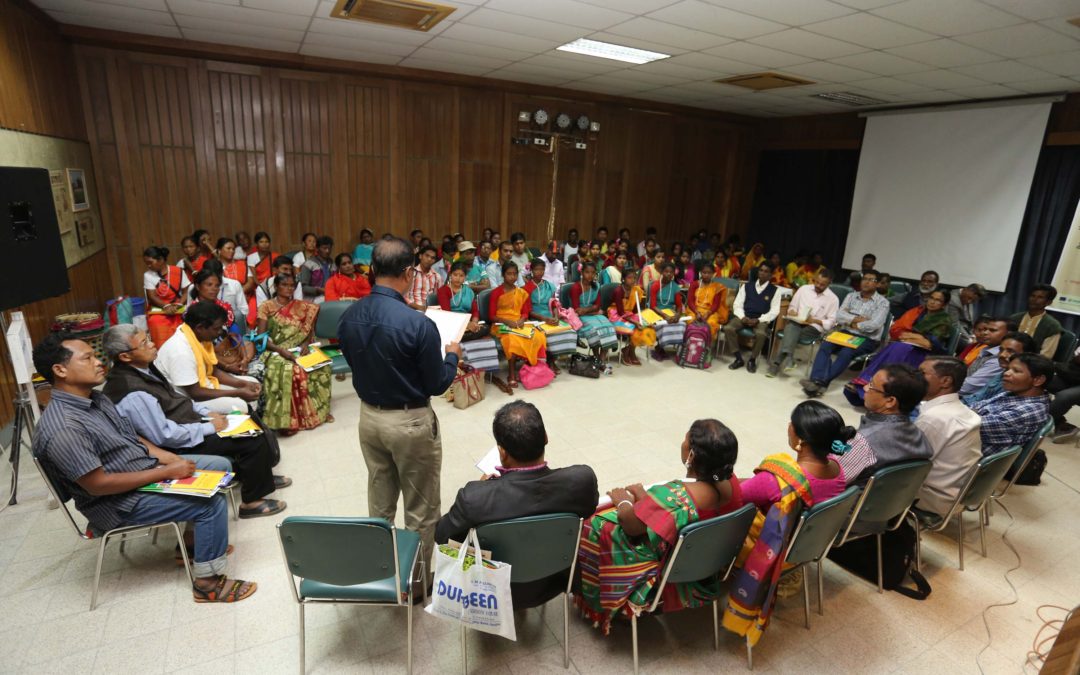

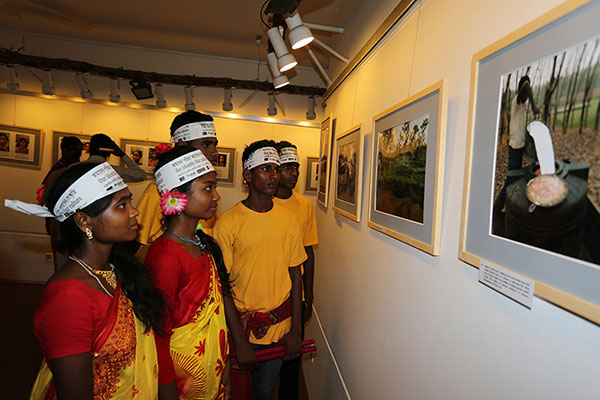
 Participants At Citizen’s Dialogue. Photo. Philip Gain.jpg
Participants At Citizen’s Dialogue. Photo. Philip Gain.jpg A Telegu Cultural Group Performing Cultural Evening. Photo. Philip Gain
A Telegu Cultural Group Performing Cultural Evening. Photo. Philip Gain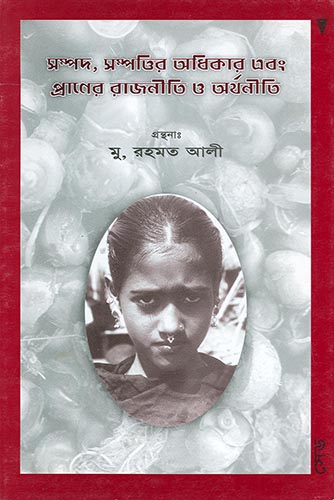
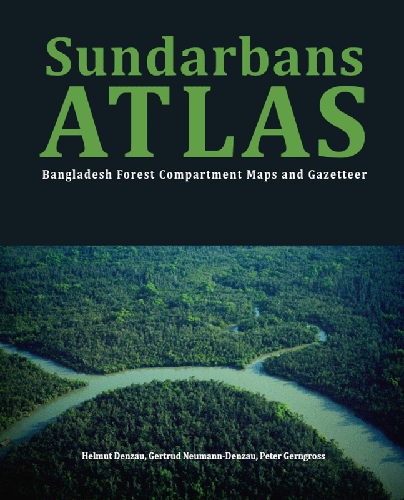
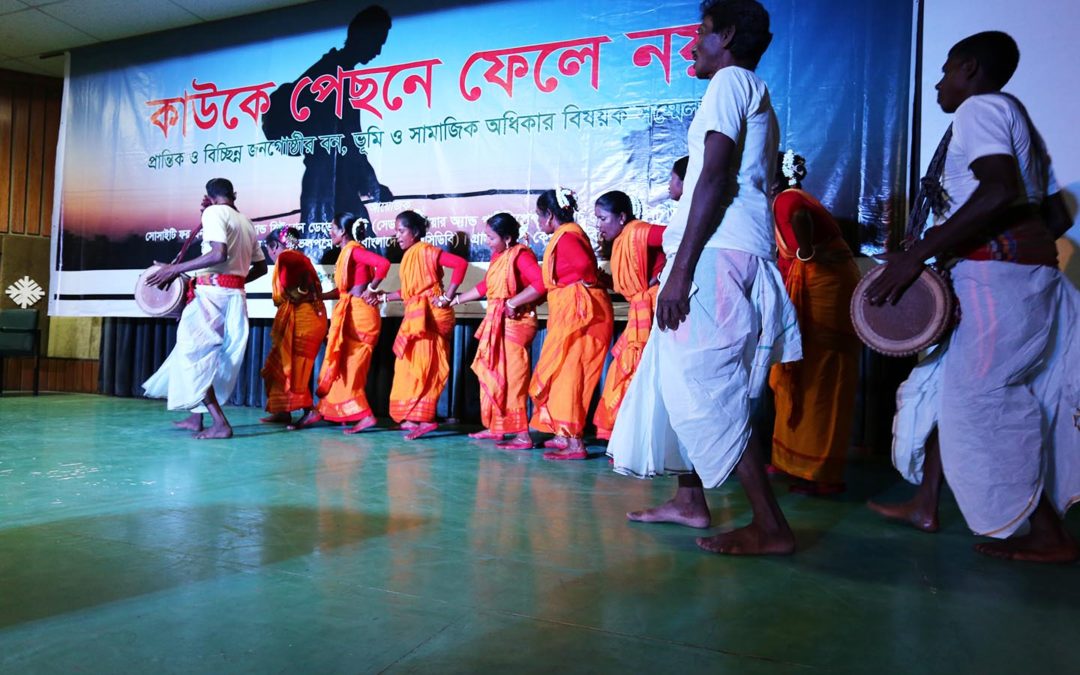
 Photo: 3. Participants at a session. Photo.Philip Gain
Photo: 3. Participants at a session. Photo.Philip Gain 1. Dr. Photo: Harishankar Jaldas speaking at the convention.Photo.Prosad Sarker
1. Dr. Photo: Harishankar Jaldas speaking at the convention.Photo.Prosad Sarker Photo: Oraon cultural team performing at a cultural evening.Photo.Philip Gain
Photo: Oraon cultural team performing at a cultural evening.Photo.Philip Gain Colorful rally to kick off the convention. Photo: Prosad Sarker
Colorful rally to kick off the convention. Photo: Prosad Sarker